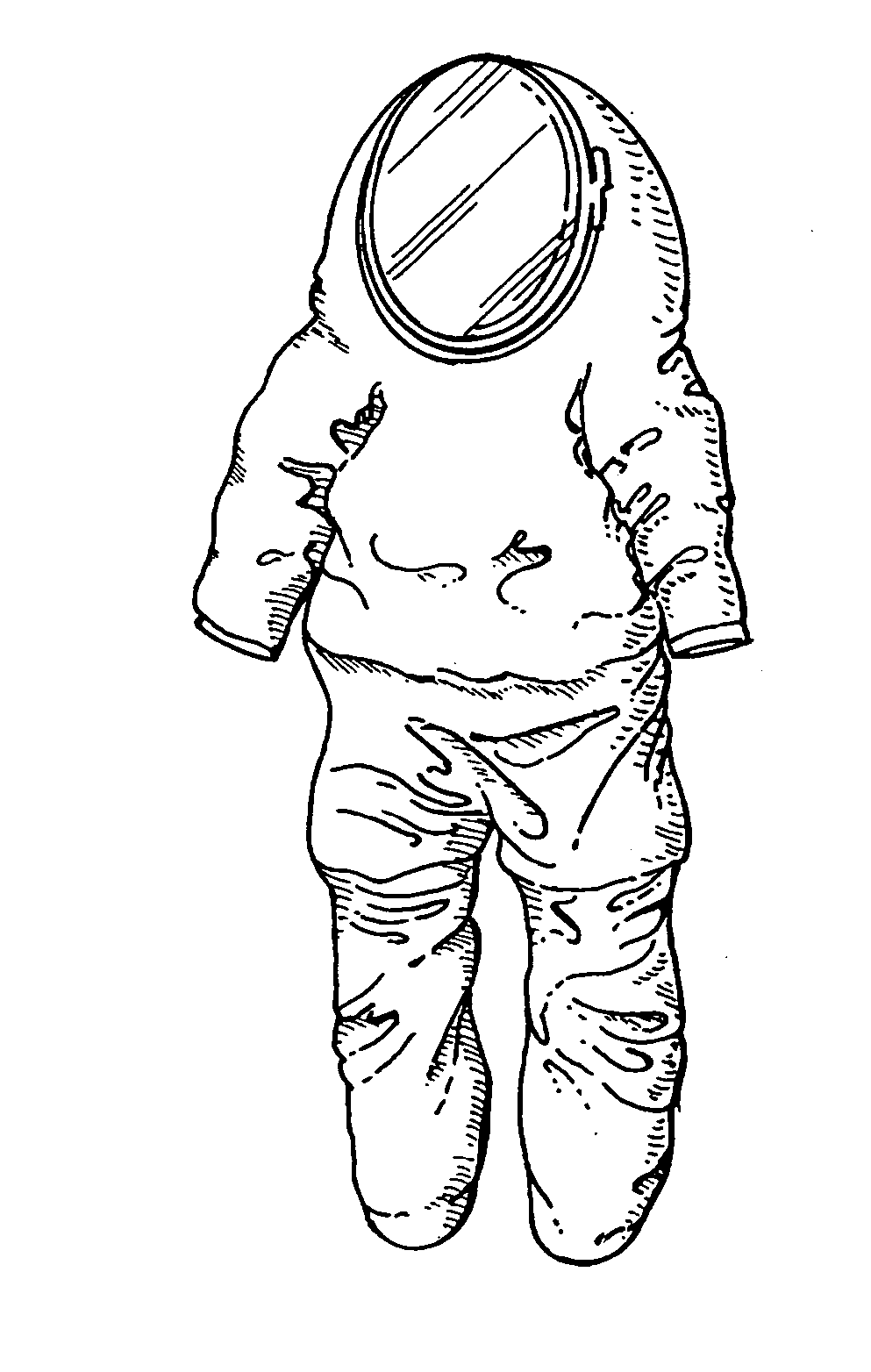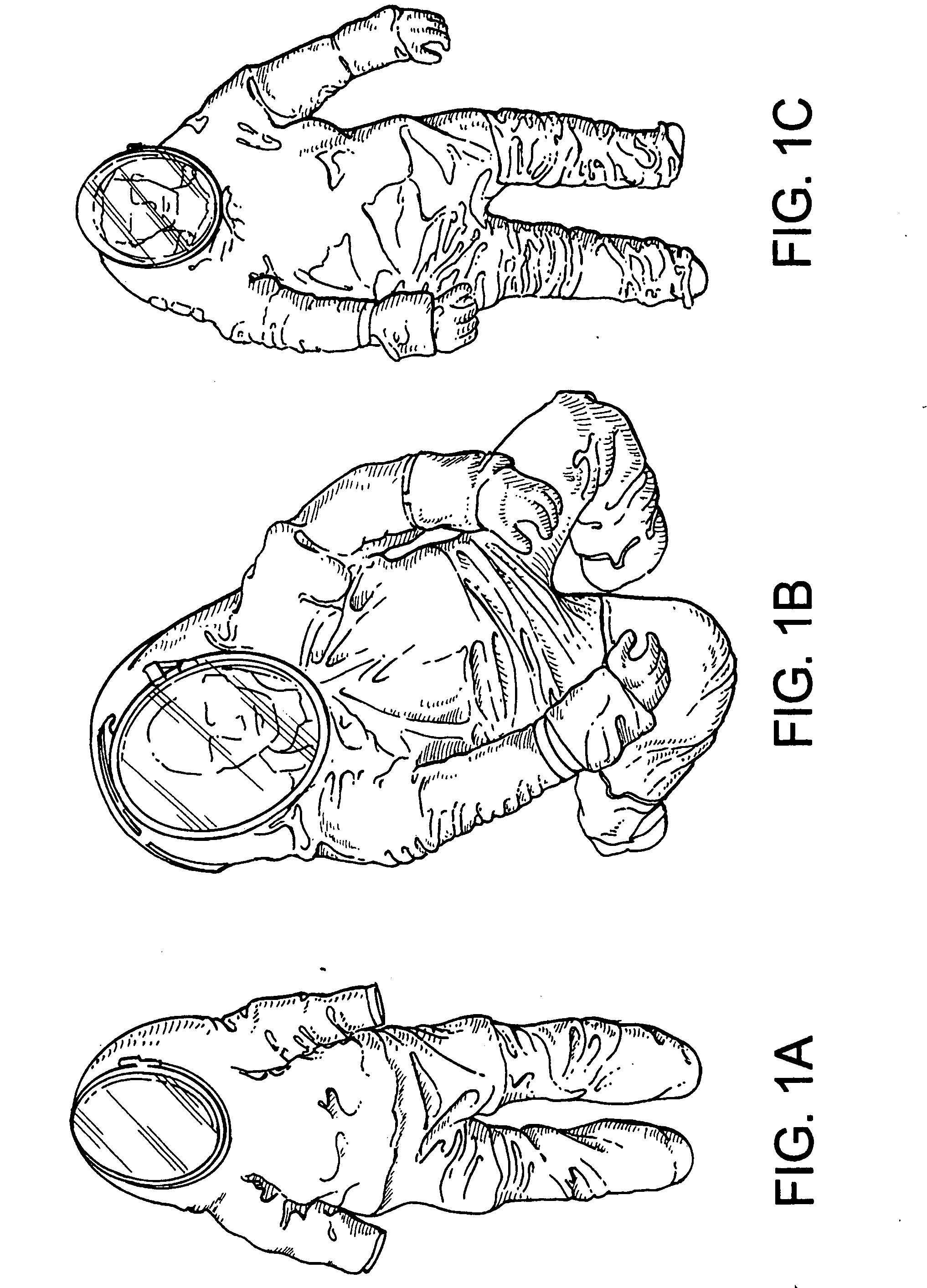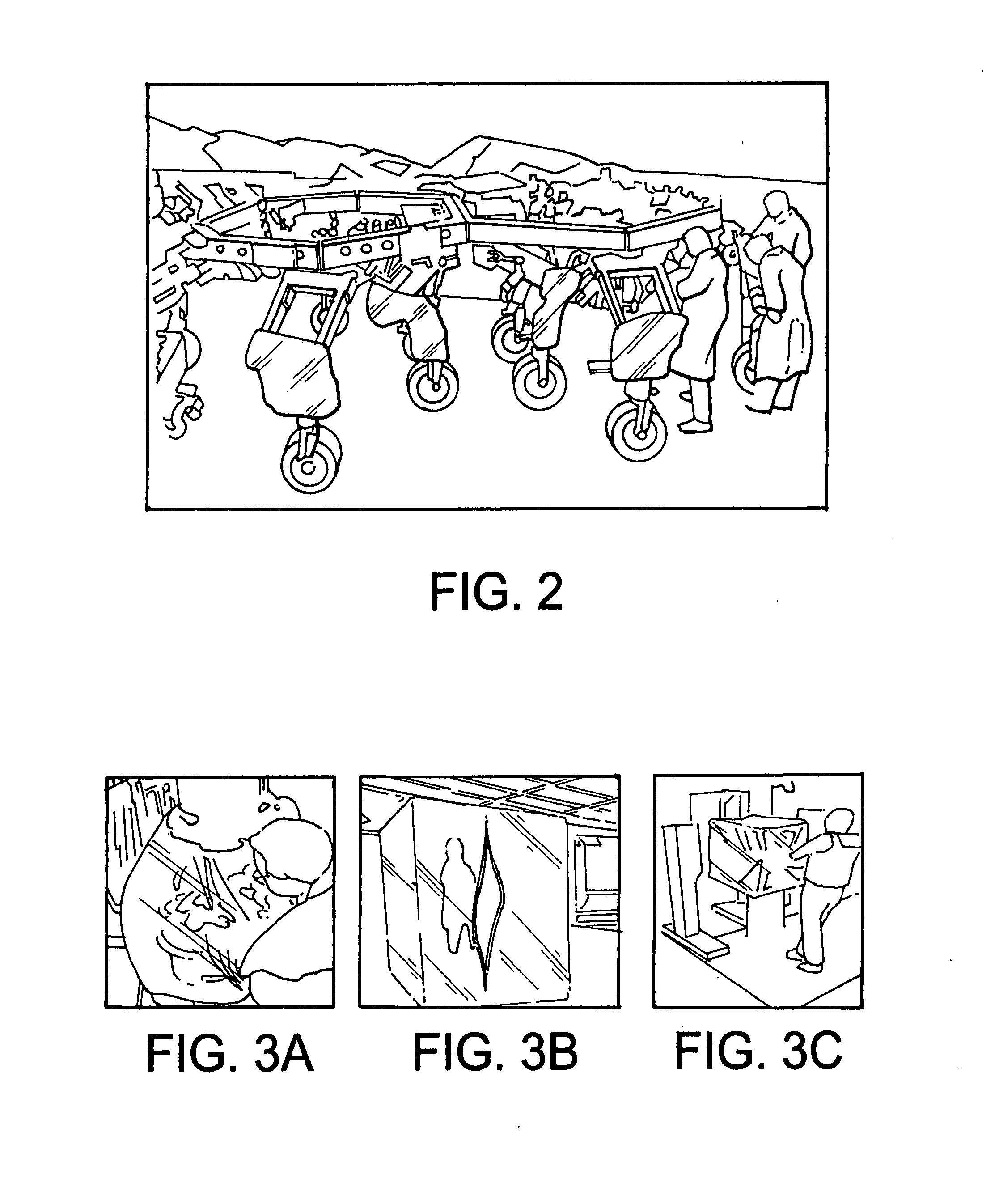Space suit protective overcover
a space suit and protective cover technology, applied in the field of space suit protective cover, can solve the problems of affecting the safety of astronauts, etc., and achieves the effects of not affecting the mobility of space suits, easy to be donned and doffed, and high strength
- Summary
- Abstract
- Description
- Claims
- Application Information
AI Technical Summary
Benefits of technology
Problems solved by technology
Method used
Image
Examples
Embodiment Construction
[0010] As shown in FIG. 1A is a protective spacesuit cover 10 which can be donned over a suited astronaut 12 (FIG. 1B) in a manner to have mobility when standing (FIG. 1C) or even kneeling (FIG. 1B). The cover 10 can protect against lunar or Martian dust as well as organic contaminants. Typical properties of lunar regolith are as follows:
Data Desorbing the Characteristics of Lunar Surface Dust:
[0011] The lunar regolith is chemically composed of several elements and compounds in varying concentrations [0012] Carbon, hydrogen, and nitrogen found in the regolith is almost entirely due to implantation by the solar winds [0013] Unlike most Earth soils, the lunar soil has high concentrations of silicon, iron, calcium, aluminum, magnesium, titanium, manganese, sulphur, and nickel [0014] Many of these elements are found in oxides such as FeO, MnO, MgO, etc. [0015] Ilmenite (FeTiO3), most common in the mare regions, is the best source of in-situ oxygen
[0016]“Weathering” has left the luna...
PUM
 Login to View More
Login to View More Abstract
Description
Claims
Application Information
 Login to View More
Login to View More - R&D
- Intellectual Property
- Life Sciences
- Materials
- Tech Scout
- Unparalleled Data Quality
- Higher Quality Content
- 60% Fewer Hallucinations
Browse by: Latest US Patents, China's latest patents, Technical Efficacy Thesaurus, Application Domain, Technology Topic, Popular Technical Reports.
© 2025 PatSnap. All rights reserved.Legal|Privacy policy|Modern Slavery Act Transparency Statement|Sitemap|About US| Contact US: help@patsnap.com



